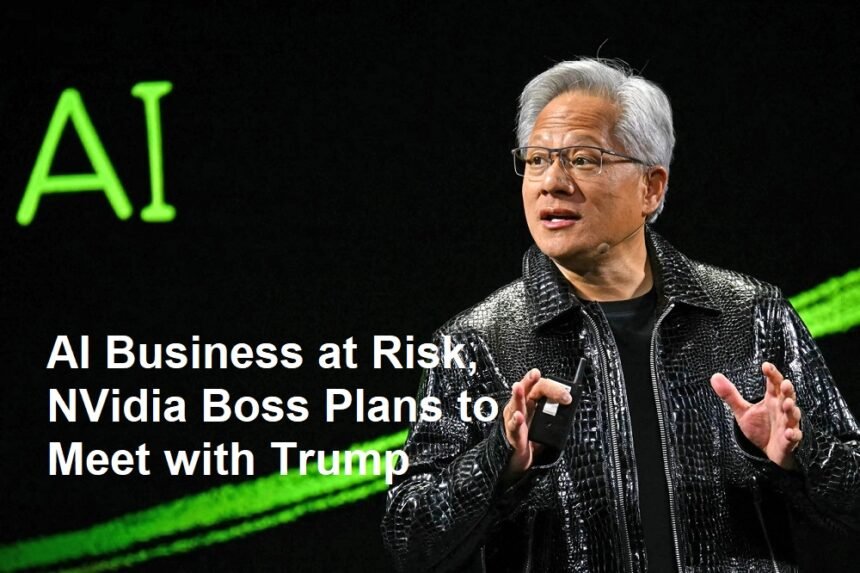The recent imposition of high tariffs on semiconductor imports from Taiwan to the United States has sent shockwaves through the tech industry, with major companies like Nvidia facing significant challenges. The tariffs, introduced as part of the Trump administration’s broader trade policy, aim to protect domestic industries but have raised concerns about their impact on global supply chains and the competitiveness of U.S. tech firms. In response, Nvidia, a leading player in the semiconductor and graphics processing unit (GPU) market, has announced plans to engage directly with the U.S. government, including a meeting with former President Donald Trump, to address the issue.
The tariffs, which target a range of electronic components, including semiconductors, have particularly affected Taiwan, a global hub for chip manufacturing. Taiwan Semiconductor Manufacturing Company (TSMC), one of the world’s largest chipmakers and a key supplier to Nvidia, has been caught in the crossfire. As a result, Nvidia is facing increased costs and potential disruptions to its supply chain, threatening its ability to meet demand for its products, which are widely used in gaming, artificial intelligence, and data centers.
In a statement, Nvidia expressed its concerns about the tariffs, emphasizing their potential to harm both the company and the broader U.S. tech industry. “The imposition of tariffs on critical components like semiconductors undermines our ability to innovate and compete on a global scale. These measures not only increase costs for U.S. businesses but also risk slowing down technological advancements that are vital to the economy,” said Jensen Huang, CEO of Nvidia.
To address these challenges, Nvidia has taken the unusual step of seeking a direct dialogue with former President Trump, who remains influential in shaping U.S. trade policy. The company hopes to persuade the administration to reconsider the tariffs or grant exemptions for critical components like GPUs and semiconductors. “We believe that engaging in constructive dialogue with policymakers is essential to finding a solution that supports both American industries and global trade,” Huang added.
The situation highlights the complex interplay between trade policy and the tech industry, which relies heavily on global supply chains. Semiconductors, often described as the “brains” of modern electronics, are produced through a highly specialized and interconnected process that spans multiple countries. Disruptions to this process, whether through tariffs or other trade barriers, can have far-reaching consequences for industries ranging from consumer electronics to automotive manufacturing.
Nvidia’s predicament has also drawn attention to the broader implications of the U.S.-China trade war, which has increasingly ensnared other nations, including Taiwan. As the U.S. seeks to reduce its reliance on Chinese manufacturing, it has turned to allies like Taiwan for critical components. However, the new tariffs risk undermining these relationships and creating new challenges for U.S. companies that depend on global partnerships.
In the meantime, Nvidia is exploring alternative strategies to mitigate the impact of the tariffs. These include diversifying its supply chain, increasing production in the U.S., and passing some of the additional costs onto consumers. However, these measures are unlikely to fully offset the financial burden, and the company remains hopeful that a resolution can be reached through diplomatic channels.
As Nvidia prepares to meet with Trump and other policymakers, the outcome of these discussions will be closely watched by the tech industry and beyond. The case underscores the delicate balance between protecting domestic industries and maintaining the global competitiveness of U.S. companies. For now, Nvidia and other tech firms are navigating an uncertain landscape, hoping for a policy shift that supports innovation and growth in an increasingly interconnected world.













